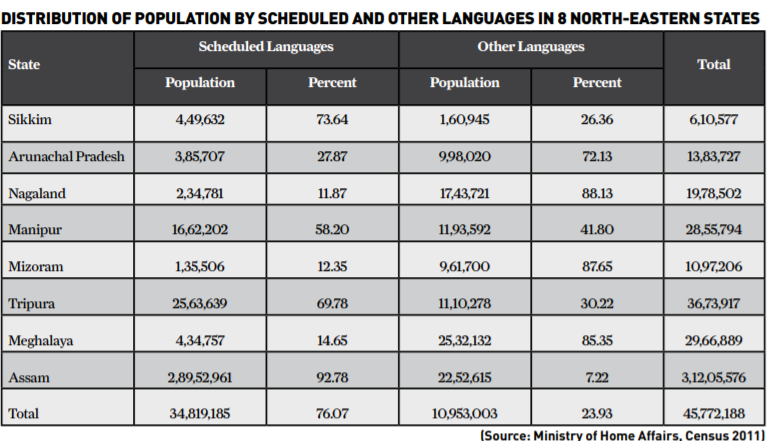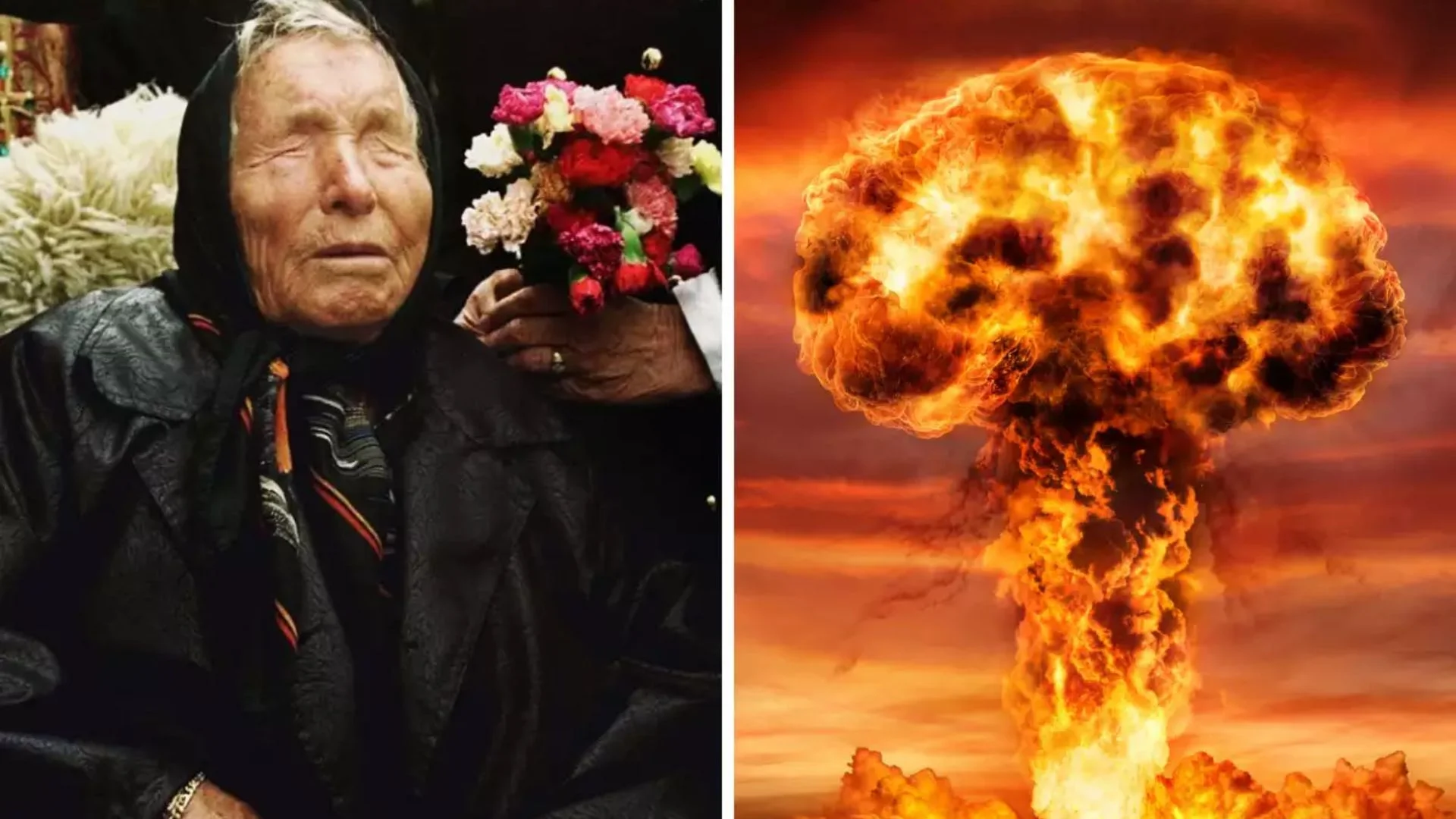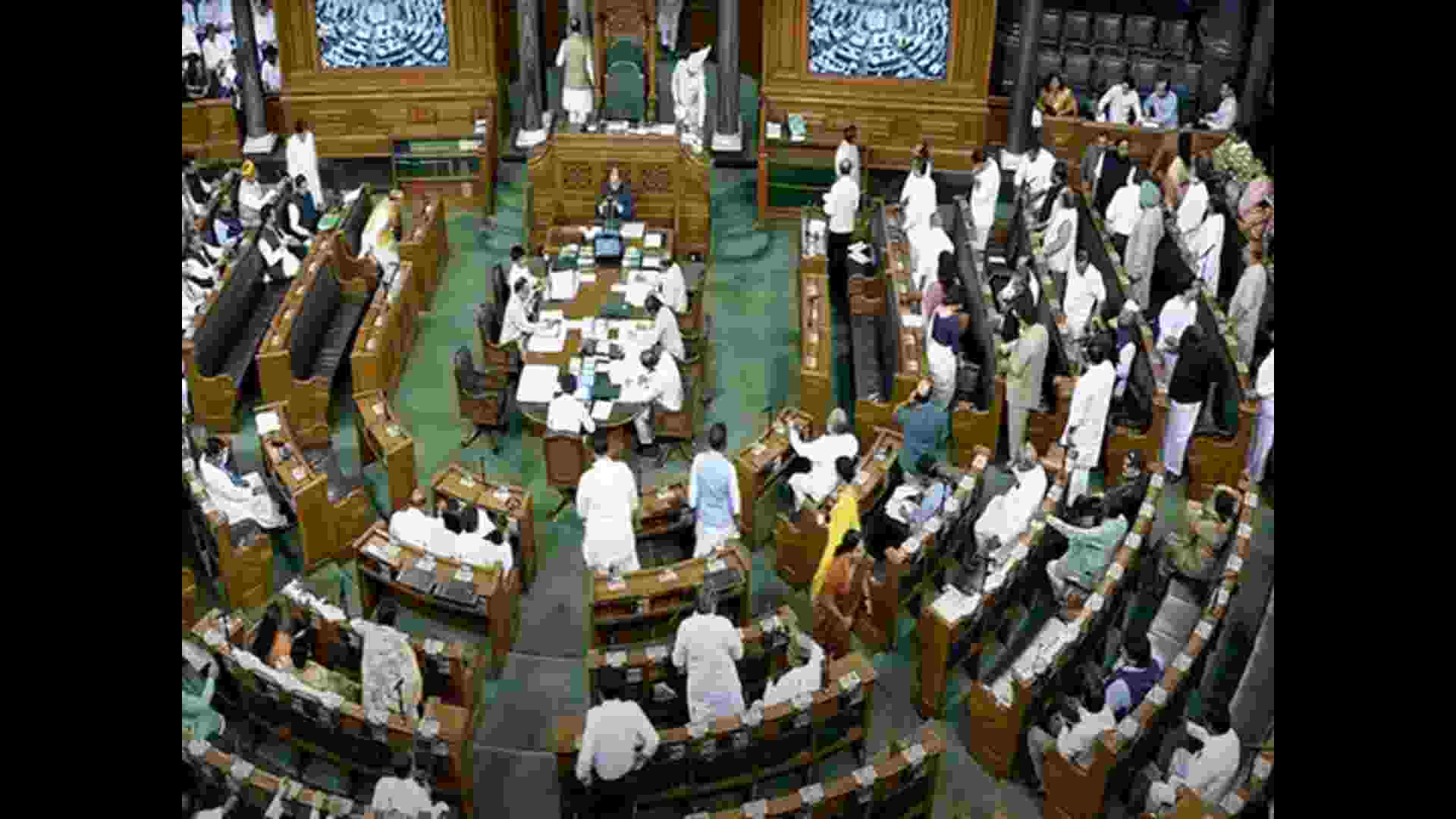
Rabindranath Tagore in his poem ‘Bharat Teertha’ wrote “…No one knows at whose beckoning call how many streams, of humanity came in indomitable waves from all over the world, over the millennia and mingled like rivers, into this vast ocean and created an individual soul, that is called Bharat”. As India revels in the celebration of its 74th Independence Day, I feel that it becomes necessary to revisit what the Indian story of the 21st century has to offer its often neglected, out- of- the- ‘mainstream’ constituents.
Tribals constitute about 8.6% of the nation’s total population and possess their own customs and languages. The usage of the word ‘tribe’ has been regarded as a colonial invention to classify people so diverse from one another in terms of physical and linguistic characteristics, demographic scale, ecological living conditions, and stages of social creation and degree of acculturation and growth. The Report of the High Level Committee on Socio-Economic, Health and Educational Status of Tribal Communities of India in 2014 listed 705 individual ethnic groups as scheduled tribes.
On the eve of Independence, there prevailed two dominant discourses on tribes in India. According to Prof. G.S. Ghurye, the indigenous tribes belonged to the same group as the Hindus; they had been pushed to backwardness because of their isolation with the larger Hindu society in due course of time. The contrasting view offered by the British-born anthropologist, and tribal activist Verrier Elwin attributed the marginalization of the tribals to their contact with the outside world, which had led them to become increasingly indebted and to lose control over their land and forests. This, in turn, brought about crippling effects on their social and cultural life as well. Linguistic identity is a key element in social and cultural life of every community. Languages are repositories of historical/geographical knowledge and healthy community interactions. Indigenous people speak hundreds of languages. The nationalist leadership attributed much of the condition at which tribals found themselves at the eve of independence principally to their social and geographical isolation and socio- economic backwardness. Therefore, the tribal policy in independent India came to be centered on the agenda of drawing the tribal communities out of their primordial condition of living and bringing them into the wider mainstream Indian society which was seen as representing a dimension of civilisation. Various provisions related to the tribal community in the Constitution of India clearly reflect this vision of the nationalist leadership. These include, among other provisions, extending fundamental rights to tribes as any other citizen, providing for their statutory recognition (Article 342) as well as proportionate representation in the Parliament and state legislatures (Articles 330 and 332). The Constitution also mandates the state to make provision for reservation in favor of tribal communities [Article 16(4)]. Besides these, the fifth and sixth schedules of the constitution (Articles 244 and 244A) provide for special administration of tribal areas.

India, with 197 endangered languages, tops the list in UNESCO Atlas of the World’s Languages in Danger (2010). Around 100 of these 197 endangered languages are from tribal areas of the Northeastern region of India (NEI). Further, 13 of them are classified as critically endangered. When a language is lost, cultural tools for encrypting and distributing indigenous information structures among the groups are also lost. This loss becomes even more acute in a country like India where caste, class, gender, religion, lingual and regional fault lines play a paramount role in defining identities of citizens at various levels. The speakers of minority and indigenous languages are devoid of the sense of individuality and recognition when languages spoken by the tribal communities are excluded from mainstream educational discourse. Here, I feel that it is important to note that most tribal languages are written in either the dominant regional language or another major language script. Given the respect that a language backed by codified script commands in the syllabic world, languages lacking a script are often trivialized as dialects, clearly missing the reality that writing frameworks often evolved well after languages and are not important language resources. The proponents of bringing tribals into the ‘mainstream’ in their zeal often ignore that privileging homogenisation and standardization of languages leads to linguistic and cultural inequality resulting in loss of freedom, and disparity in participation and growth. It is in this context that I analyse the issue of education in the local language/ mother tongue and the preservation and revitalization of indigenous languages.
How did Language Policy Evolve in India?
The Indian Constitution emphasized that for an initial period of fifteen years, the official business of the Union should be performed both in English and Hindi. Following this time, Hindi would become the Union’s only official language. It also acknowledged linguistic diversity. Part XVII contains provisions on Official Language, including Articles 345-347 on ‘Regional Languages’ and ‘Language of the State.’ The Constitution allows the Indian States to define their own official language(s) by legislation under these articles. It also emphasized that ‘the language(s) chosen by the States need not be one of those listed in the Eighth Schedule’. Article 29(1) provides for safeguarding the rights of linguistic and cultural minorities, which ensures the right of linguistic and cultural minorities to maintain their linguistic and cultural practices. Article 30(1) provides that linguistic and religious groups have the right to establish and administer educational establishments to protect their linguistic and/or cultural heritage. Further, Article 30(2) forbids the State from discrimination against minority educational institutions on the basis that they are under the supervision of linguistic or religious minorities in offering financial assistance. These two broad provisions meant for the protection and promotion of multilingualism are equally applicable to tribal communities. The Official Language Act, 1963, officially established Hindi and English as the languages of the Central Government, thus, allowing States and provinces to use their ‘own’ languages. However, the re-organization of states based on linguistic cohesiveness had already begun with the formation of Andhra Pradesh in 1953. The inclusion of certain languages in the Schedule VIII further led to the local pushpull of linguistic identities. The Constitution of India recognises twenty-two languages as ‘scheduled languages.’
The Linguistic Geopolitics of NEI
The Partition of India in 1947 reduced the North- East India to a landlocked region. Tripura, Manipur and Khasi Hills of Meghalaya were erstwhile Princely States that merged with India after independence. At independence the entire region except Manipur and Tripura comprised the state of Assam. The vast international border and weak communication between the North- East and the rest of India added to the diaphanous nature of insulated politics there. At the same time, the influx of migrants from neighbouring States and countries brought about major demographic changes in the region. The seclusion of the region, its complex social character and backwardness compared to other parts of the country -all resulted in complex set of demands, sometimes even secessionist, from different tribal pockets of the North- East. The demands for political autonomy first arose when the non- Assamese felt that the Assam government was imposing Assamese language on them. In Assam, forced Bengali immigration had led to minor and major ethnic movements. Hence, the declaration of Assamese as the official language was seen mostly as a win over the Bengali imposition. There were agitations and riots throughout the State. Leaders of the major tribal communities formed the Eastern India Tribal Union which later transformed into All Party Hill Leaders Conference in 1960. They wanted to separate from Assam and form a separate tribal State. Ultimately, several states got carved out of Assam on the issue of linguistic identity. At different points in time, the division of Assam led to the formation of Nagaland in 1963, Meghalaya in 1970 and Mizoram in 1972, to protect the languages of Naga, Khasi and Mizo, respectively. Kokborok, the Tripuri language was given recognition by the Left Front government as the second official language in 1978 but the script chosen was Bengali. This later became a point of contention for younger generations of Tripuris who insisted on Borok being written in the Roman script rather than Bengali. The creation of several Autonomous District Councils for ethnic tribes, like the Maras, Lais and the Chakmas gave momentum to the demand of a separate identity in Mizoram. This further provided the impetus to other tribal minorities to fight for separate Autonomous District Councils, e.g.: the Hmars (recognized as one of the major languages only in 1986), the Brus and the Paites.
Why are the Tribal Languages on the Verge of Extinction?
After the Census of 1971, the languages that were spoken by less than 10,000 speakers were placed under the section ‘Others’. According to the data of Census of 2011, there are 121 languages and 270 mother tongues spoken in the country. The data below gives a clear picture on speakers of Scheduled and Non-Scheduled languages in the NEI.
The above data shows that all the NEI states have a large number of people who speak Non-Scheduled languages. The share of Non-Scheduled languages speakers is high as 85% in Nagaland, Mizoram, and Meghalaya. Only the state of Assam has the least population of 7.22% who speaks NonScheduled languages.
While exploring the reasons behind the endangerment of tribal languages in NEI, I came across six major causes responsible for their ‘linguistic genocide’.
According to Marchang (2017) the output value per factory was about Rs. 15 crore in NEI as against Rs. 27 crore in India. Moreover, only 2% of higher educational institutions of India were in NEI during 2012-13. Language can be passed from one generation to another if there are economic incentives for the younger generation to stay in the region in which the language is spoken. Lack of opportunity in education and employment is a major reason why tribals from NEI migrate to other regions within the country. The yearly out-migration from tribal areas of NEI to the rest of India almost doubled between 1991 and 2001. Considering these endangered languages are mainly tribal languages, lack of economic incentive and the resultant migration could be considered as a key factor contributing to the loss of mother tongue speakers. As observed in tribal regions in Africa which have indigenous languages disappearing, the presence of ex- colonial languages like English and the disproportionate prestige attached to them plays a major factor in the neglect of these languages. One of the factors for some of the indigenous languages not getting attention could be that there are other languages with a bigger population of speakers getting asymmetric attention. In this context, the ‘Assam factor’ plays a primary role in the linguistic tussle in NEI. For example, while Assamese had already been a part of Schedule VIII, a yet another language- mainly spoken in Assam – Bodo was added to Schedule VIII in 2003. However, Nissi/Dafla spoken in Arunachal Pradesh or Konyak/Ao spoken in Nagaland are not in the list of languages demanded to be included in Schedule VIII. Less percentage of people speaking Non-Scheduled languages in Assam can be attributed to inclusion of ‘Bodo’ in the list of Scheduled languages in 2003. Though Article 350A of the Indian Constitution calls for attempts by the State and local authorities to provide appropriate facilities for the teaching of children belonging to linguistic minority groups in their mother tongue at the primary level of education, this is not carried out in practice. Since the school textbooks and other curricular material in dominant languages hardly talk about the regular life experiences of tribal children, the language barrier gets supplemented by the content barrier. The publication of newspapers in India caters to only 35 languages; while the state run enterprise All India Radio broadcasts in 120 languages. More than half of all internet content in the world is in English. Therefore, the exclusion of tribal languages from education and their limited or no usage in media and internet constitute one of the foremost causes for their endangerment. A thorough analysis of the Constituent Assembly debates and the first list of languages from Schedule VIII highlights that the standard used to create a bifurcation between ‘Scheduled’ and ‘Non-Scheduled’ languages did not take into consideration the status of languages in the country. With the Constitutional Amendment of 2003, two tribal languages – Bodo and Santali – were recognized as official languages. It was the first time since the Constitution of India came into force that such recognition was accorded to a tribal language. Even though Bodo and Bhili are spoken by lakhs of people, much greater than the numbers for Sanskrit, until 2003, Bodo was not included in the list. This shows that greater attention has been given to Indo-Aryan and Dravidian family languages as compared to the tribal languages from NEI which are from other language families. The risk of endangerment for the languages lacking a script increases manifold. For tribal speakers of such languages, the memories are weaved as designs at the helms of the clothes and history is remembered as ballads and songs.
The Policy Developments
The Provincial Education Minister’s Conference in 1949 stated that:
“The medium of instruction in the junior basic stage must be the mother-tongue of the child and that when the mother-tongue was different from the regional or State language arrangements must be made for instruction in the mother tongue by appointing at least one teacher to teach all the classes, provided there are at-least 40 such pupils in a school.”
In 1952, the Secondary Education Commission proposed the study of at least two other languages, e.g. Hindi and English, at the higher primary level. The ‘Three-Language Formula’ which was suggested by Central Advisory Board of Education in 1956 was adopted in the Chief Ministers’ Conference in 1961. The purpose of Three-Language Formula was to ‘promote national integration and equalise the burden of learning languages on children in Hindi and non-Hindi speaking areas’. The Kothari Commission (1964-66) proposed an ‘updated’ Three-Language Formula, which acquired widespread acceptance and is the language policy currently in effect in most of India. In 1968, the National Education Strategy recommended the Three-Language Plan to be introduced. The Parliament adopted the National Policy of Education (NPE) in 1986. As per the policy framework, provision relating to scheduled tribes was not treated as a matter of language or titled bilingual education but instead implemented as follows:
The socio-cultural milieu of the scheduled tribes and its distinctive characteristics underline the need to develop the curricula and devise instructional materials in the tribal languages at the initial stages, with arrangements for switching over to the regional language.
In 1992, the Three-Language Formula was revised again under the aegis of National Policy on Education. As per the 2002 National Council Of Educational Research And Training Survey data and Sixth and Seventh All India School Education Survey (1993 and 2007) the ‘first language’ and ‘second language’ offered at the primary stage in the North Eastern states, especially, Arunachal Pradesh, Nagaland and Sikkim, is usually English or Hindi. Khasi and Garo were recognized as the Associate Official Languages only in 2005 in Meghalaya by the enactment of the Meghalaya State Language Act of 2005. This indicates that the successive governments at the Centre and the State level have remained lackadaisical in their bid to expand the usage of local languages in educating the tribal children despite various states having their ‘own’ languages as the official language and there being the constitutional provisions guaranteeing the protection of interests of linguistic minorities.
The New Education Policy (NEP) 2020 among other things says the local language/ mother tongue would be the preferred medium of instruction till grade five, possibly Class 8 (in both public and private schools). ‘Since children learn languages most quickly between 2-8 years, and multilingualism has great cognitive benefits for students, children will be immersed in three languages early on, from the Foundational Stage.’ Local sign languages will also be taught wherever possible and relevant. The policy also acknowledges that ‘only about 15% of the country speaks English, and this population almost entirely coincides with the economic elite.’ English is regularly used by the elite as a prerequisite for jobs — even in cases of jobs where knowledge of English is entirely irrelevant. This results in the marginalisation of large sections of society based on language. Nonetheless, taking into account the advent of technological advancement and globalization, and ‘to help break the current divide between the economic elite and the rest of the country’, English as a language must also be available and taught in a high quality manner in all schools. ‘The emphasis should be on functionality and fluency.’ Meanwhile, ‘the medium of instruction should be conducted to the extent possible through the local language/ mother tongue and other Indian languages.’ The dichotomy drawn between the local language/ mother tongue as the medium of instruction and English as a discipline, if upheld in letter and spirit, has the potential to ensure both the preservation of linguistic pluralism and economic survival of tribal mother tongue speakers. Experience of the policy initiatives from the past shows that an ambitious policy like NEP 2020 requires micro- level management of schools starting from the panchayat level; decentralisation of planning and execution, from the recruitment of teachers and their training to identifying children speaking varied local languages and creating nation- wide database for the same with the use of high- end information technology, is the key to its successful implementation.
India’s languages are some of the richest, most scientific, and most expressive in the world, with a compendium of ancient as well as modern literature that help form India’s national identity. Multilinguism is a necessity for India to conserve its linguistic and cultural diversity. A multilingual India is better educated and also better nationally integrated. Languages form a critical part of heritage of tribal communities. By compelling tribal children to receive education about history and culture in a language that is alien to them, constitutional and other policy objectives of tribal justice are defied. The 21st century story of India must offer its indigenous communities a multilingual India that is more inclusive, more creative, and more innovative; where the chances of socio-economic development for all and political stability strengthen the spirit of democracy.
Vijay K. Tyagi is an LL.M candidate at the Indian Law Institute, New Delhi, and Ex-LAMP Fellow. Inputs by Himanshu Khanna.















